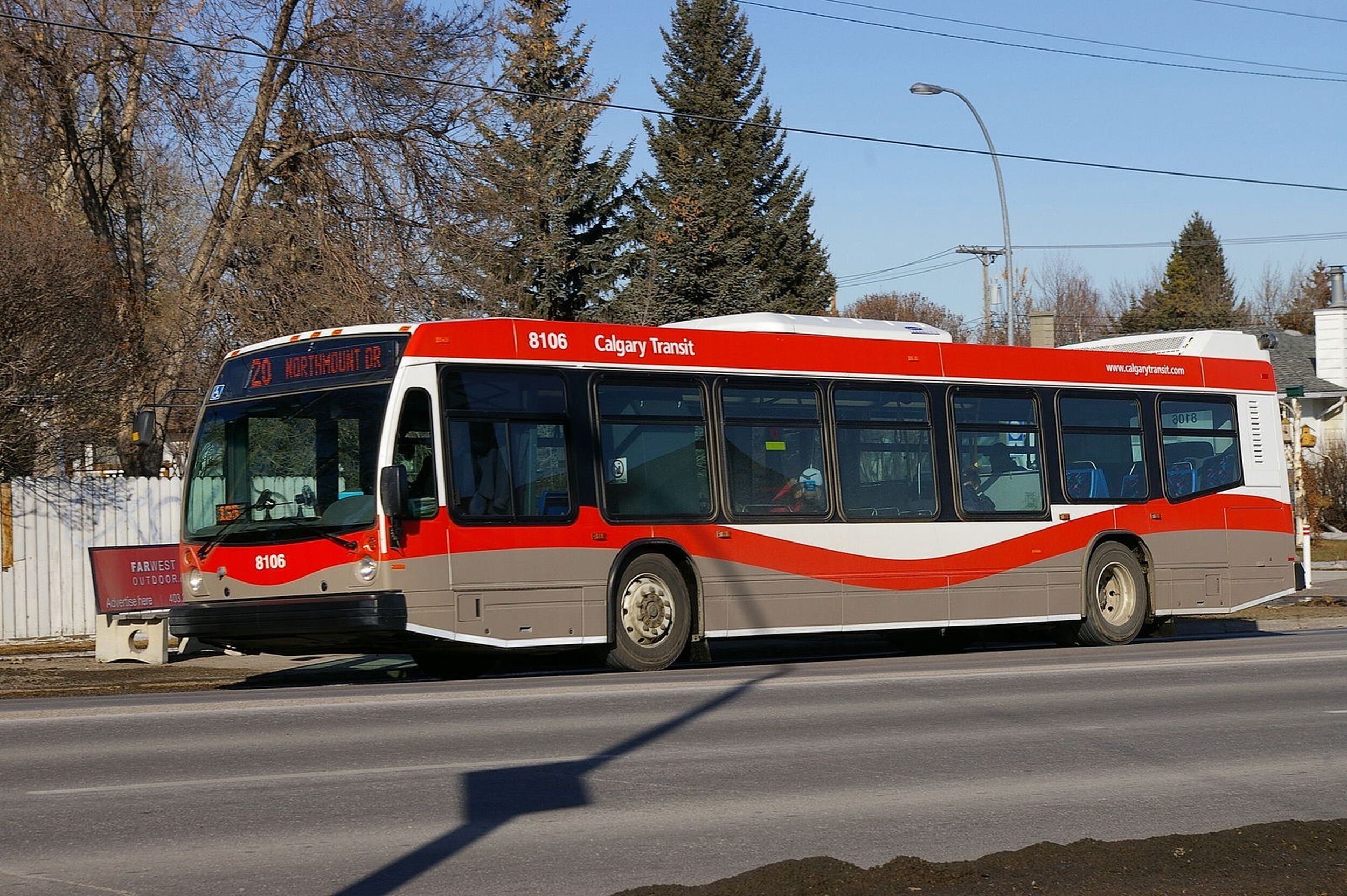
As transit cuts loom, councillors wrestle with future of city bus service
Is it time to move away from obligatory routes?
With Calgary Transit ridership and revenue both on the decline in recent years, city administration is recommending a $6.8M cut to transit for 2018. The reduction would affect 27 routes throughout the city.
The prospect of cutting transit service presents a conundrum for councillors—and raises larger questions about the future of Calgary’s bus system as new technologies disrupt urban transportation.
The 2018 cut is one of many being proposed across all city departments. Calgary’s new city council will flesh out and vote on the budget adjustments this week.
“A big piece for me is that if we actually reduce service in some areas, we may end up getting into a vicious circle where we’re taking in even less revenue,” says first-term councillor Jeromy Farkas.
Transit ridership peaked in 2014 and has dropped 7% since—in large part due to the economic downturn.
But the way people get around the city is also changing, thanks to services such as Uber and car2go, along with new bicycle and pedestrian infrastructure.
“We’re competing,” said Farkas.

And as new transportation choices become available, it’s easier for Calgarians to forgo waiting around for a bus that comes infrequently. There are more convenient alternatives.
“When you can get an Uber for a certain amount to the free fare zone or to your skeletal transit network, what impact does that have on our feeder bus routes?” said Coun. Evan Woolley, noting that the buses are expensive to operate.
“We need to start to think about things differently, because people are making decisions differently.”
It doesn’t help that while companies such as car2go offer sleek smartphone-based user experiences, Calgary Transit still requires riders to fish into their pockets for coins and paper tickets—the legacy of a botched (and costly) attempt to introduce electronic fares here.
“I still don’t understand why we haven’t been able to get that right, but other cities show that moving to a tap-and-go technology increases ridership,” said Farkas. “It makes transit more accessible and it increases the amount of money we’d bring in from fares.”
Car trips into downtown are up
In recent years, the way people get downtown has shifted for better and worse. The total number of trips into the core has declined steadily since 2013, and the mode mix has changed.
Walking and cycling are up as a percentage of trips—but so is driving, as parking costs have gone down thanks to the downturn. Transit has taken the hit.
For most of the past decade, most trips into the core were by transit, then cars. This year that flipped: cars are tops. “People who have jobs are making decisions to drive more,” said Woolley. “So that puts a strain on our ridership, which puts a strain on our budget.”

In the outer reaches of the city, meanwhile, where Calgary Transit runs obligatory but infrequent feeder bus service, it’s questionable how deeply cuts would be felt.
“It’s hard to cut something that doesn’t exist,” quipped first-term councillor Jyoti Gondek, who represents the city’s far north-central neighbourhoods. “Seriously — what are you going to cut? Consistently in Ward 3, we don’t have an east-west connection that’s any good.”
“I really hope there are not going to be any implications to our BRT service, because it is one of the most beloved and best-used in the city.”
The city isn’t specifying exactly which routes would be affected by the cuts, but spokesperson Sean Somers said it would be lower-performing routes.
“So maybe doing things like instead of coming once every 30 minutes, we’re coming once every 60 minutes,” said Somers. “Obviously we wouldn’t want to do that on popular and well-subscribed routes.”
‘A bit more like a business’
As Calgary approaches the next four-year budget cycle beginning in 2019, these questions will only become more pressing.
Willem Klumpenhouwer, a PhD candidate at the University of Calgary’s Schulich School of Engineering, says the city needs to decide what kind of transit model it wants. Should it continue with more of a coverage-based model, where token bus service is extended to all areas of the city, or shift to a ridership-based model?
“If you doing a ridership focus, you’re running it a bit more like a business,” said Klumpenhouwer. “You’re finding the routes that are popular and you’re trying to get as many people on board per vehicle hour.”
“Obviously it’s not one or the other — it’s a spectrum. Finding where we sit on the spectrum is an important conversation, and I don’t think we’ve had that conversation in a while.”
Jeremy Klaszus is editor-in-chief of The Sprawl.
Support independent Calgary journalism!
Sign Me Up!The Sprawl connects Calgarians with their city through in-depth, curiosity-driven journalism. But we can't do it alone. If you value our work, support The Sprawl so we can keep digging into municipal issues in Calgary!



